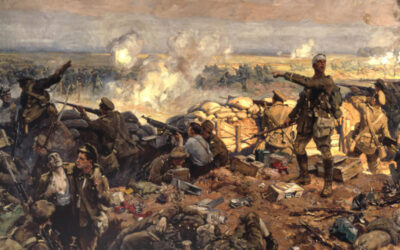When Major Shannon Archer went back to work in June, nine weeks after the birth of her son, there was a room in her building she could have used to pump her breast milk. But it was a public space, with clear windows that didn’t provide adequate privacy. So instead, she would go out to her car and pump her breast milk several times a day.
With CANFORGEN 116/21, Support to Members Pumping and/or Nursing (accessible only on the National Defence network) being issued July 28, all that changed in a matter of days.
“I came back to work after the August long weekend, and they already had a dedicated lactation room set up, that was adequate and appropriate, with a chair and a desk, and just around the corner from a washroom and the kitchen area,” she said. “My Chain of Command was very supportive, and the CANFORGEN lays it out clearly.”
The CANFORGEN directs Commanding Officers to put into place a lactation plan that includes a minimum of one lactation room for every 400 personnel. Potential secondary spaces for future use will also be considered, as well as how this need can be met in a field or operational environment.
Designated lactation rooms will be located in safe, central, and accessible areas, and supervisors must make every effort to accommodate as much time as is needed by the member. Each designated room must have a locking door and should include a comfortable chair with arms and in close proximity to an electrical outlet. Other requirements include a cooler or mini fridge in which to store milk, cubbies or drawers to store pumping materials, and a sink located nearby in which to wash hands and pumping pieces.
While some units have promoted the use of offices, provided they meet some or all of these criteria, bathroom facilities are not considered appropriate.
Once the rooms are established, they will be open to DND employees as well as CAF members.
Maj Archer, who joined the CAF in 2008, says her mother was also in the CAF at a markedly different time. She had to give up breastfeeding when she went back to work 16 weeks postpartum because of a lack of accommodation in the 1980s.
Today, Health Canada and the Canadian Paediatric Society recommend providing human milk to infants for up to two years and beyond, and many of those returning to the workplace continue to pump and/or nurse. This is a human right and should not be treated as a burden on the organization, regardless of the gender identity of the member.
CAF members are not required to produce evidence to prove or to justify their decision and their need to pump or nurse during work hours. Any members facing issues acquiring space and time can contact their local conflict and complaint management office.
Related Stories
National Day of Mourning: 5 CDSB Gagetown Remembers
In recognition of the National Day of Mourning on April 28, 5th Canadian Division Support Base (CDSB) Gagetown held a ceremony on Friday, April 26, to commemorate those who lost their lives or were injured in the workplace. The National Day of Mourning came into...
The Pale Green Fog: The Second Battle of Ypres
As they went over the trenches and through the battlefield, they saw a pale green gas in the air that smelled like a mix of ‘pineapple and pepper’, causing severe cough, vomiting, and/or irritation in the eyes. These were the horrific scenes of the Second Battle of...
Lifting for Legacy: Chad O’Quinn Memorial Powerlifting Competition
The annual Chad O’Quinn Memorial Powerlifting Competition will be held at 5th Division Support Base (5 CDSB) Gagetown on June 6, 2024. Registration details will follow as we get closer to the event. The competition will be open only to military members and all...



